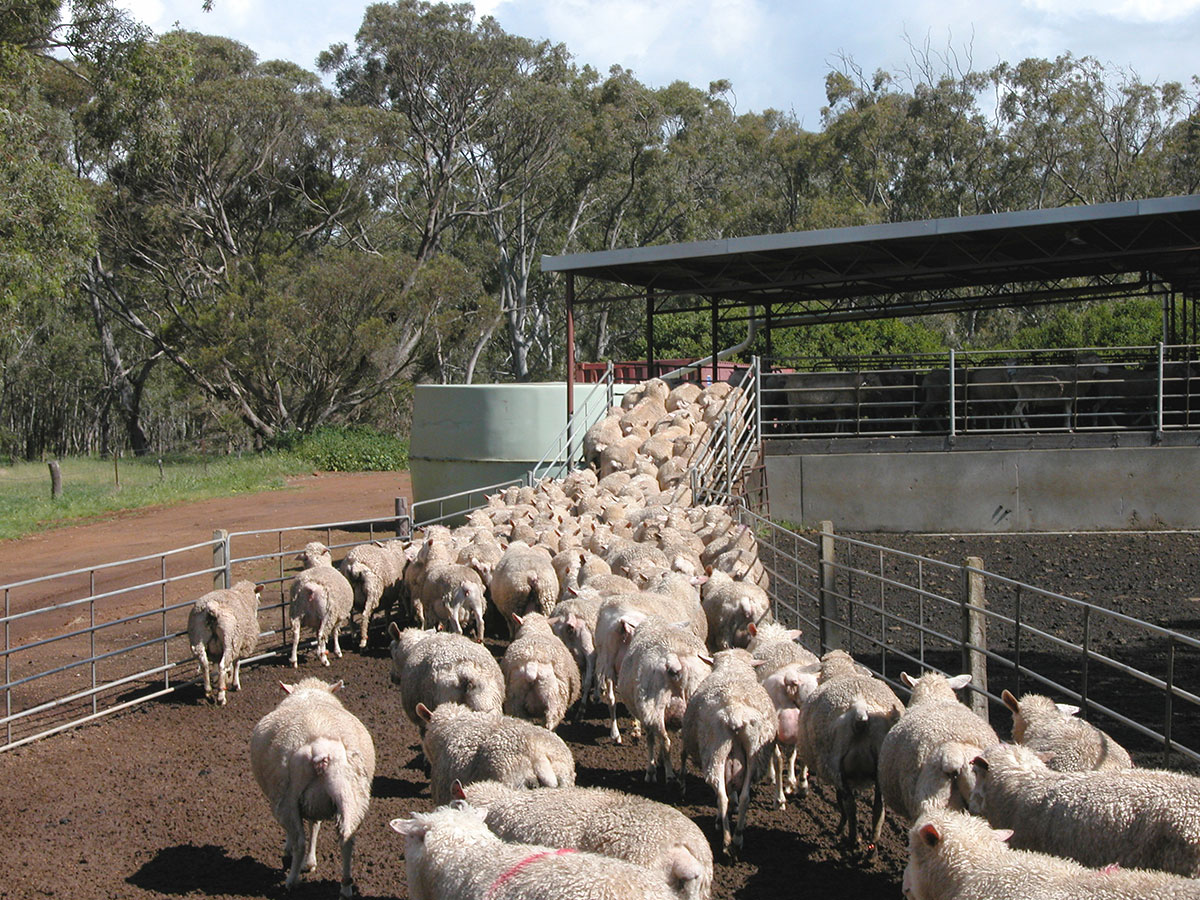The welfare of animals in yards has multiple benefits. Reducing stress on animals reduces the stress on you and makes life simpler, calmer and safer. If you never have to use an electric prodder, poly pipe or get upset and swear at cattle in the yards you can probably stop reading here. If you dread working with cattle in the yards then you probably need to do something about it for your own benefit and the benefit of the stock.
There are three factors which influence safe, calm and stress free stock handling; yard design, animal temperament and the handler’s temperament. Get any of these wrong and every yard session will be a nightmare, get most things right and yard work becomes a pleasure, or at least not unpleasant.
There are plenty of good resources for yard design and it is worthwhile doing some research and speaking to experts before investing in new yards. Good designs incorporate things like curved races, sheeting visual barriers and holding yards (cooling off yards). A holding yard should be large enough to accommodate all the cattle required, prevent over-crowding and allow mothering up when handling calves. Low stress features such as visual barriers, removing protrusions, noise reduction and a new crush can also be added to existing yards.
Cattle temperament is a combination of the innate temperament of the individual and, more importantly, how it has been handled previously. The first interaction cattle have with people and yards should be positive or neutral rather than negative. Cattle are a prey species and consider dogs and people as predators. To overcome their instinctive fear their interactions with people should not be negative or unpleasant. The same applies to yards and animals or any new experience.
Yard weaning is now widely adopted and most people who yard wean can attest to how much more pleasant it is to work with yard weaned cattle. It also has advantages in production and meat quality in feedlots. If you buy in cattle that have not be yard weaned it is worthwhile putting them through a similar process over a few days before you let them out.
Using dogs with cattle and especially cows and calves in yards increases stress and encourages cattle to kick. So leave dogs tied up to reduce the overall stress for everyone and the safety of the dog as well.
Having quiet, docile cattle is important from a production standpoint and it also reduces the likelihood of injury to handlers, damage to equipment and generally makes life easier. Temperament is a highly heritable trait therefore ad hoc culling of animals with poor temperament makes sense, as these animals are potentially dangerous and tend to stir up other cattle making them less manageable. However a longer term option is to select bulls with high docility EBVs (Estimated Breeding Values) which will result in genetic improvement in temperament, this change is cumulative, permanent and ongoing.
For the handler it may be difficult to change long term behavioural patterns which are usually self-reinforced through the response of stressed cattle. Stressed cattle respond to the way they have always been handled. Trying to rush jobs and getting behind can lead to poor work practices. Plan to allow a realistic timeframe to do the job, including a time for cattle to settle after mustering.
Changing behaviour may require a reset. This could involve starting yard weaning or taking a course on Low Stress Cattle Handling, which will guide you through some of the principles of cattle behaviour laid out by Temple Grandin.
Improving handler and stock behaviour and yard design will lead to long term benefits. It will make life more pleasant, profitable and reduce stress on both man and beast.
